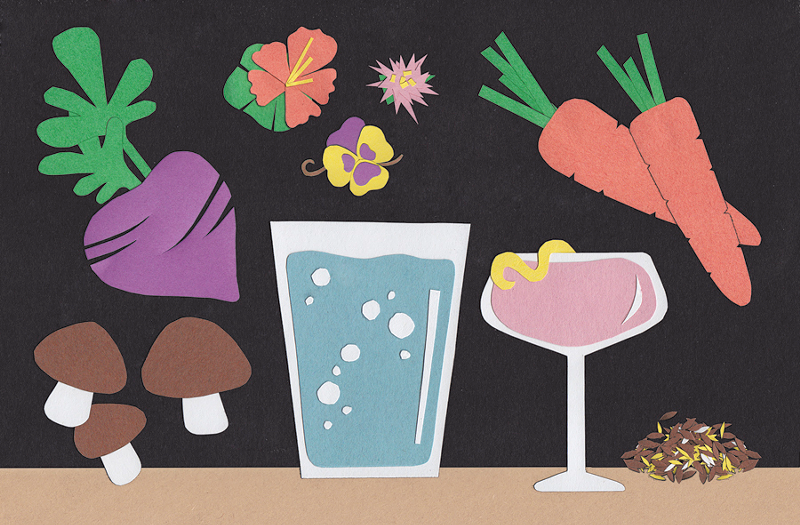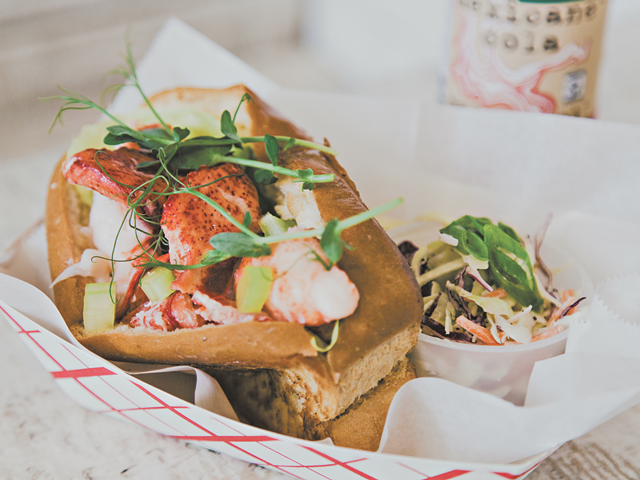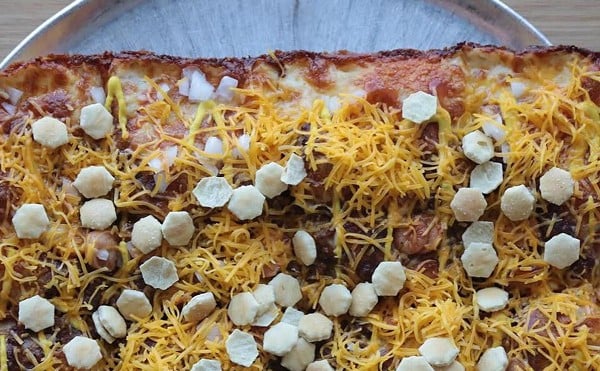Foodie magazines and other media outlets have been predicting the hottest food trends for 2018. And many of the augurs are crafting their forecasts by interpreting end-of-year reports from major grocery chains, including Whole Foods and Britain’s Waitrose (a posh U.K. supermarket that sells things like quail eggs and frozen truffle mac and cheese).
While the grocery stores rely on research and data collection to make their lists, others rely on good ol’ observation, and some of the trends that keep popping up seem to indicate that humans are becoming more interested in healthy foods, simplicity and sourcing with a renewed focus on environmental consciousness (waste reduction, sustainable and hyperlocal ingredients) and plants. Basically, 2018 is going to be a big year for vegetables. Huge.
Here’s what the experts predict we’ll see in 2018:
• Root-to-stem cooking. This is kind of like snout-to-tail but with a veggie focus — it uses the entire piece of produce. Expect to see creative edibles like pickled rinds and pestos made from parts of plants you don’t usually eat.
• High-tech plant proteins. Whole Foods says sci-fi products like “bleeding” vegan burgers and sushi-grade “not-tuna” (aka toona) made from tomatoes will be popular, as will atypical nut milks cold-pressed from peas, pecans and other legumes. Soy- and gluten-based substitutes are on their way out.
• Regular plant proteins. Waitrose also predicts there will be an increase in people choosing a “flexitarian” diet, so expect the obsession with ancient grains, seeds, hipster greens, etc. to continue. This also means we’ll most likely see the uber popular “bowl” trend continue into 2018 — grain bowls, poke bowls, build-your-own bowls…
• Floral flavors — think rose, hibiscus and other edible flowers showing up as essences or ingredients in desserts, snacks and beverages.
• Superfood powders. Matcha, maca root, acai and other nutrient-dense powdered supplements, plus Ayurvedic spices like turmeric. You can put them on and in everything (including cocktails).
• Mushrooms. Mushrooms as mushrooms. Mushrooms as umami flavor boosters. Mushrooms as a meaty texture component. Big mushrooms. Tiny mushrooms. Weird mushrooms. All mushrooms.
• Izakaya Japanese food — think ramen, gyoza and beyond.
• Middle Eastern culinary influences. Find it in dishes and ingredients like shakshuka, harissa and grilled halloumi cheese. This is a deeper exploration beyond falafel and gyros to encompass foods from Persia, Syria, Morocco and more.
• Bubbly beverages, including LaCroix (duh), plus sparkling coffee, mocktails and other creative mineral waters.
What shows up on grocery store shelves also tends to show up on menus at restaurants, so we asked a handful of local chefs and beverage experts what we can expect to see when we dine out at their establishments this coming year, from food preparations and ingredients to trends in edibles and cocktails.
Jared Bennett
Metropole, 609 Walnut St., Downtown, metropoleonwalnut.com
- Roasted proteins — At this seasonal hearth-to-table restaurant, executive chef Jared Bennett plans to continue to focus on the wood-burning fireplace — “where a centuries-old approach meets 21st-century techniques,” he says — to create smoky and roasted entrées including skate wing, pork skirt steak and turkey wings.
- Grains and greens — “The fire isn’t only reserved for the meats, of course,” Bennett says. “Also taking center stage are wheat berries, kohlrabi and chayote — greens and grains you might not find at your local grocer or spiced up in such a custom fashion.”
- Culinary detritus — He’ll also be incorporating what he refers to as “culinary detritus” in dishes — the “stems, flowers and the odds and ends left behind after the meal prep is done.”
Chase Blowers
Eighth & English, 2038 Madison Road, O’Bryonville, 8thandenglish.com
- Sustainable sourcing — “We are hoping to get even closer to ‘dock-to-door’ sourcing,” says chef/owner Chase Blowers of the seafood-focused Eighth & English. “Specifically, using fishermen and women and companies that are making conscious decisions and practices that have the oceans’ overall health in mind. Not just the sustainability of product, but the sustainability of environment and waters.”
- Next-level farm-to-table — “We are specifically trying to get 100 percent of our seasonal produce produced by my family’s farm,” Blowers says. “I think we will also see more of ‘the whole farm’ to table, meaning using more of what the farm has to produce in order to give us the obvious center-of-the-plate items.”
- Elevated herbal cocktails — “We try to create cocktails that complement our food and share the same seasonal mentality,” Blowers says. “People are becoming increasingly interested in complex cocktail balance and the use of herbs and spices in their mixed drinks.”
Ryan Santos
Please, 1405 Clay St., Over-the-Rhine, pleasecincinnati.com
- West Coast vibes — “My inspiration for 2018 will surround the juice bar and health food culture from the West Coast,” says chef/owner Ryan Santos. “There are so many juices and nut milks that embody a lot of rich, well-balanced flavor profiles. … Those work really well for sauces to build fresh flavors, working with ingredients like coconut water kefir, maca root (and) cultured cashew milk. (They) give a dynamic, unexpected balance.”
- Herbal drinks — Santos has been using similar West Coast-style health-food ingredients in Please’s cocktail program. “We’ve already started using golden mylk with a turmeric base and coconut water in our winter cocktails, and the team has also been experimenting with green tea-infusions and kombucha that give an herbaceous edge.”
- Low-ABV cocktails and bubbly beverages — “We have been seeing a lot of non-drinkers who are seeking something complex and flavorful, so we are looking for creative inspiration with their restrictions,” Santos says. “This has led us to start to develop a full range of selections including non-alcoholic, naturally fermented sodas and kombuchas with the produce we continue to source locally and regionally. And our new low-ABV happy hour, which we started last month, featuring low-alcohol cocktails that lend to a more social experience without the nasty hangover.”
Molly Wellmann
Wellmann’s Brands, wellmannsbrands.com
- Old “dustys” and old-fashioned spirits — “For me, I hate following trends. What excites me the most about this industry and what has always excited me is the history behind the cocktails and the historic cocktails. Some of that is old spirits,” says business owner/mixologist Molly Wellmann. “In the bourbon industry especially, there are a lot of people who are finding what are called ‘dusters’ — the old dustys. Sometimes you can find (bottles of whiskey) from before Prohibition. Sometimes you can find things in your grandma and grandpa’s basement in their old bar from the ’60s and ’70s. So there are a lot of people in the industry who are starting to collect these and there’s actually a law that will be passed in Kentucky — it either has passed already or is getting ready to be passed — where you can actually sell this whiskey, which is really good because you haven’t been able to legally in some states.” Wellmann also predicts that people will start making “old cocktails but using the correct spirits, or using the spirits that many of these craft distillers are starting to remake.” That means historic drinks with ingredients like white corn whiskey.
- The rise of gin — “People are starting to appreciate gin, thank god,” Wellmann says. “Every time I go to a tasting and I mention that I love gin, I’m seeing a lot more people instead of saying, ‘Oh, I had such a bad time with that in high school,’ they’re starting to open up to it and realize that all gin tastes different. They’re starting to discover these differences in these different brands of gin. And I’m starting to see bartenders appreciate the different botanical blends that are used in different gin.”
- Non-alcoholic cocktails — “Since the beginning, I’ve been very adamant about the fact that you can make a great drink that doesn’t have alcohol in it,” Wellmann says. “Because there are a lot of people who don’t drink. Even people who do drink, sometimes they don’t want to drink. Maybe they’re DD or maybe they have something big in the morning they have to do or they’re pregnant or they’re taking medication, but they still want to hang out with their friends and they still want to have a good time. And they don’t want to drink just a freaking Coca Cola. So I’m so excited to see more and more bartenders take that to heart. And making some really neat, interesting things that are non-alcoholic. Hopefully we’ll start seeing that on every menu — a really good non-alcoholic drink or even a lower-proof alcoholic drink.”
Jackson Rouse
Bauer Farm Kitchen, 435 Elm St., Downtown, bauercincinnati.com
- Eastern European influence — Although focused on returning Cincinnati to its German roots, owner/chef Jackson Rouse says he has expanded Bauer’s offerings to include fare inspired by Russian, Polish and Hungarian cuisine. “We teamed up with Babushka Pierogies to create our now most popular small plate on the menu: our confit duck, chestnut and caramelized shallot pierogi with plum mustard jus,” he says. “We start by aging whole ducks, slowly cooking them and incorporating staple winter ingredients. The mustard is a labor of love where we ferment plums, blend in our housemade mustard and finish with grape must. Then we add a little duck stock and we have a winner.”
- Historic German beer — “Another unique trend in this over-stimulated craft beer haven that we have experienced is a call for the ‘originals,’ ” Rouse says. “We shifted our focus from a heavy-handed list of local craft beers to a very heavy European portfolio. To our amazement, we out-sell local beers 3:1. We still have an amazing collection of local love, but have seen our customers really long for the classic, original beers like Weissbier Hell, schwarzbier, rauchbier, and kölsch. With the rise of American craft brewing, a lot of folks have never had the original beer that craft brewers have mimicked.”
Looks like some of those food and drink predictions will be catching on here, making for an interesting and edible 2018.
Contact Maija Zummo: mzummo @citybeat.com






